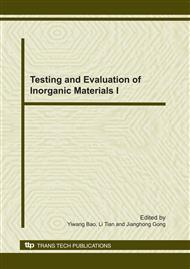p.497
p.502
p.506
p.510
p.514
p.518
p.522
p.526
p.530
Influence of Testing Methods on Setting Time of Foam Concrete
Abstract:
As a porous material, foam concrete can be manufactured not only into building materials with good heat insulation performance, but also into materials with good water permeability, and by properly controlling the size and shape of the pores, the foam concrete can be used as acoustic material to meet People's increasing demand for functional materials. Therefore, the development of foam concrete has a vast potential for future market. Though the setting time of foam concrete is one of the key technical parameters for the preparation of high performance foam concrete, there is no standard method for the testing of the foam concrete’s setting time. That militates against the development of foam concrete greatly. In this paper, two methods were used to measure the setting time of foam concrete. The results show that the offset value of the foam concrete’s initial setting time measured by the two different methods increases with the increasing of foam volume adding to the foam concrete which use the Portland cement and Portland cement-mineral admixture as binder. Finally, a prefer method to test the foam concrete’s initial setting time was selected.
Info:
Periodical:
Pages:
514-517
Citation:
Online since:
December 2010
Keywords:
Price:
Сopyright:
© 2011 Trans Tech Publications Ltd. All Rights Reserved
Share:
Citation:


